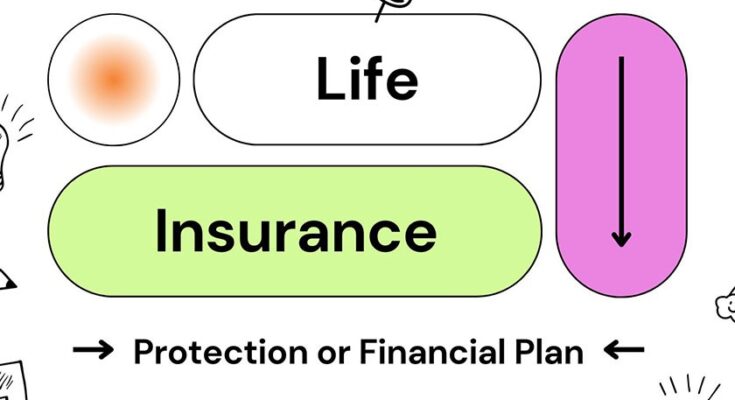Losing a loved one is one of the most challenging experiences anyone can go through. In times of grief, the last thing anyone wants to think about is dealing with insurance paperwork. However, if your loved one had a life insurance policy, it’s important to know how to file a claim and access the benefits to provide financial support during such a difficult time.
In this guide, we’ll walk you through the steps to file a life insurance claim, the documents you may need, and how to avoid common pitfalls. This comprehensive process can be overwhelming, but knowing what to expect can make it easier to navigate.

What is a Life Insurance Claim?
A life insurance claim is a formal request made to the insurance company by the beneficiary (or beneficiaries) after the policyholder has passed away. The purpose of the claim is to receive the death benefit payout, which is typically a lump sum of money meant to provide financial security for the beneficiaries. The payout can help cover funeral expenses, debts, living expenses, or other financial obligations left behind.
Who Can File a Life Insurance Claim?
The person or persons named in the policy as the beneficiaries are the ones who can file the claim. This can include a spouse, children, parents, business partners, or others designated by the policyholder. If the beneficiary is a minor or not able to manage the claim themselves, a legal guardian or representative may need to file on their behalf.
Step-by-Step Guide to Filing a Life Insurance Claim
1. Notify the Insurance Company
The first step in filing a life insurance claim is notifying the insurance company about the policyholder’s death. You can do this by calling the insurance provider’s customer service number. Many insurance companies also allow you to file a claim online through their website or via email. Be prepared to provide the policy number (if available), the deceased person’s full name, and the date of death.
2. Gather the Required Documents
After notifying the insurance company, you’ll need to gather the necessary documents to support the claim. The specific documents required can vary depending on the insurance company, but generally, you’ll need:
- Death Certificate: The original or certified copy of the death certificate is essential. This proves that the policyholder has passed away.
- Claim Form: Insurance companies typically require you to fill out a claim form, which can often be downloaded from their website or obtained by contacting their claims department.
- Policy Documents: A copy of the life insurance policy may be required, especially if there are questions about the terms or beneficiaries.
- Identification: You may need to provide identification, such as a government-issued ID, to verify your identity as a beneficiary.
- Cause of Death Documentation: In some cases, the insurance company may request medical records or other documentation to confirm the cause of death, especially if the death was unexpected or occurred under unusual circumstances.
3. Submit the Claim Form and Documents
Once you have all the necessary documents, you can submit your claim form and supporting materials to the insurance company. Depending on the insurer, this can often be done by mail, email, or through their online portal. Be sure to keep copies of all the documents you submit for your records.
4. Wait for the Claim to Be Processed
After submission, the insurance company will review your claim and the supporting documentation. The company will investigate the claim to ensure that it meets all policy terms and conditions. This may include verifying the cause of death, ensuring the policy was active at the time of death, and confirming the beneficiaries.
In most cases, life insurance claims are processed within 30 to 60 days, though this can vary depending on the complexity of the case and the insurer’s policies. If the insurance company requires additional information or clarification, they may contact you during the processing period.
5. Receive the Payout
Once the claim has been approved, the insurance company will issue the death benefit payout. This can be in the form of a lump sum or periodic payments, depending on the terms of the policy. The beneficiaries will be notified of the payment method and the amount.
What to Do If the Life Insurance Claim is Denied
In some cases, a life insurance claim may be denied. While this is rare, it can happen. Common reasons for claim denial include:
- Non-payment of premiums: If the policyholder failed to pay premiums or let the policy lapse, the insurer may deny the claim.
- Exclusions in the Policy: Some policies have exclusions for certain causes of death, such as suicide within a certain period after the policy was issued, or death due to illegal activities.
- Incorrect Information: If the policyholder provided false information on their application, the claim may be denied.
- Contestability Period: If the policyholder passed away within two years of purchasing the policy (the “contestability period”), the insurer may investigate the cause of death more thoroughly.
If your claim is denied, you have the right to appeal the decision. Contact the insurance company and ask for the specific reasons for the denial. You may need to provide additional information or documentation to support your case. If necessary, you can consult with an attorney or a life insurance claims professional to help with the appeals process.
Tips for a Smooth Life Insurance Claim Process
- Keep Copies of Everything: Always keep a copy of the policy, death certificate, claim form, and any correspondence with the insurance company.
- Act Quickly: While it’s understandable to take time to grieve, it’s important to file your claim as soon as possible to ensure that the payout is processed in a timely manner.
- Stay Organized: Having all your documents ready and organized can help speed up the claims process.
- Follow Up: If you don’t hear back from the insurance company within the expected time frame, follow up to ensure your claim is being processed.
Conclusion
Filing a life insurance claim may seem like an intimidating process, but by following these steps and staying organized, you can ensure that your claim is processed efficiently. While no amount of money can replace the loss of a loved one, the death benefit from a life insurance policy can provide essential financial support during a difficult time.



